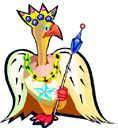
Ideally, leaders should adopt a style that fits their subordinates’ personalities as well as the task at hand. This will achieve optimum effectiveness and efficiency. Why? Because the effectiveness or efficiency of leadership isn’t dependent on the particular style of the leader, but on whether or not it’s appropriate to the work, the worker, and the situation.
Leaders often find situations where they must alter their personal style in order to successfully accomplish the task at hand.
There are several different leadership styles, but in general, researchers agree that leadership styles tend to be predominantly either work- or worker-oriented:
1. Authoritarian Style
2. Democratic Style
3. Minimum Effort Style
4. Adequate Performance Style
5. Highest Dedication Style
Nevertheless, there are certain variations on these styles that demand our careful investigation.
Source: Industrial Management Course
[tag]leadership, management[/tag]




nice naman po nito..
madami ako natutunan for my homewrok..
tnx poh..!!!